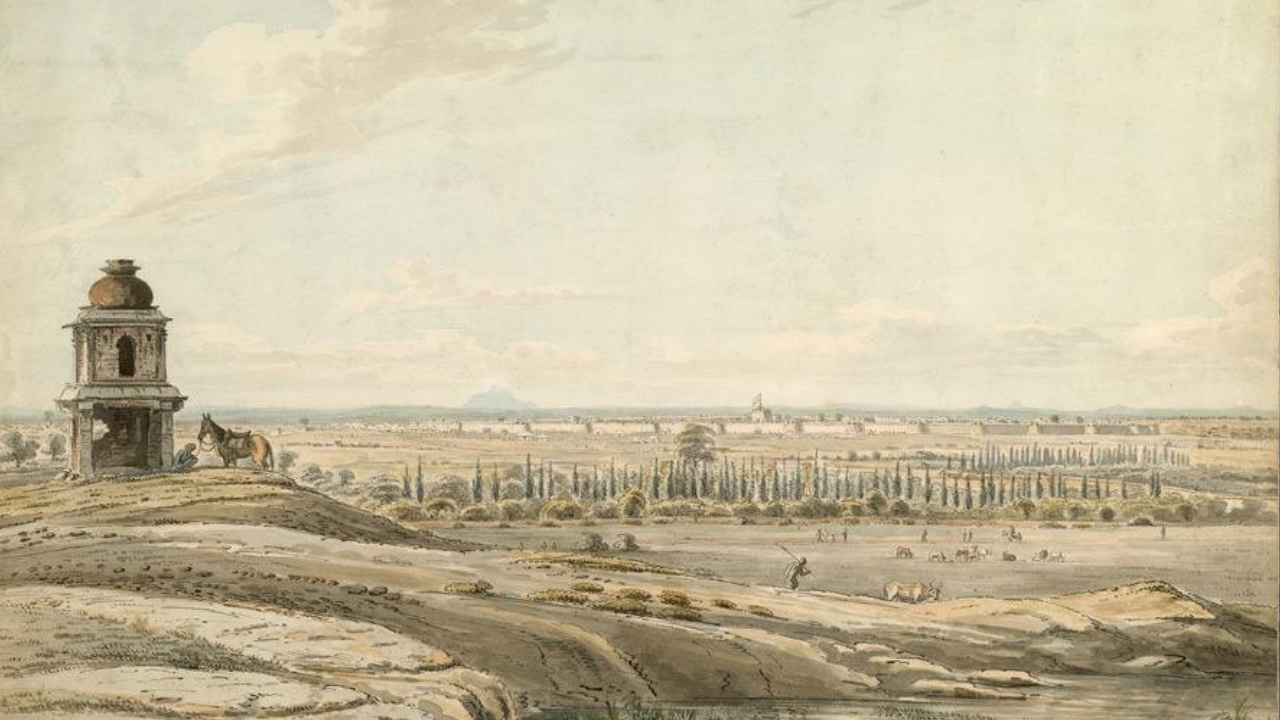Kempegowda’s four historic watch towers marked Bengaluru’s original city limits. Learn their history, purposes, and significance as the city expanded from a small settlement into a major metropolitan hub.
Bengaluru, today a sprawling metropolitan hub and IT capital of India, was once a modest city carefully planned and laid out by its visionary founder, Kempegowda I. Centuries ago, the city’s limits were clearly marked by four watch towers, constructed to define its outer boundaries. Built by Kempegowda’s grandson, these towers were not merely structures; they symbolised the city’s organisation, administration, and strategic planning.
Though modern Bengaluru has expanded far beyond these points, the watch towers remain as silent witnesses to the city’s rich history, offering a fascinating glimpse into its past.
About Kempegowda I
Ruling from 1513 for 46 years under the Vijayanagara Empire, Kempegowda I, officially known as Nadaprabhu Hiriya Kempe Gowda, is celebrated as the founder of Bengaluru. He was a visionary leader responsible for constructing several iconic landmarks, including Bengaluru Fort, the Cantonment area, numerous lakes, water tanks, and temples. His legacy is commemorated every year on 27 June, celebrated as his birth anniversary in Karnataka. Today, Bengaluru’s main international airport bears his name, and a museum dedicated to him preserves the history and contributions of this remarkable ruler.
The Origins of Kempegowda’s Watch Towers
In 1638, to demarcate the city’s boundaries, Kempegowda’s son or grandson built four watch towers in the cardinal directions. According to historians, these towers were said to mark the limits to which the town would extend. The prophecy has not only come true, but Bengaluru has now expanded tens of kilometres beyond these original boundaries.
Research indicates that each tower had a specific purpose: some were for medicinal jurisdiction, others for spiritual oversight, some for tax collection, and one for punishment enforcement, reflecting the city’s administration and planning during that era.
The Four Watch Towers
Lalbagh Watch Tower
Situated within the Lalbagh Botanical Garden, this tower is constructed on Peninsula Gneiss, a rock formation dating back 3.4 billion years. It marks the southern end of Bengaluru. Historical research shows that this tower was primarily used for medicinal purposes, overseeing the arogya (health) jurisdiction. Visitors can access this tower whenever Lalbagh is open and enjoy a close-up view of this historic structure.

Mekhri Circle Watch Tower
The second tower is located in Sri Ramana Maharishi Park at Mekhri Circle, a serene green space where people often meditate and take leisurely walks. It marks the northern boundary of Bengaluru and historically functioned as the tax jurisdiction tower (kandaya). Visitors can access it freely during park hours.

Gavipuram Watch Tower
Hidden behind the Bande Mahakali Temple, the third watch tower is less known, tucked away along a short, muddy path. It marks the western limit of the city and was primarily used for religious purposes, serving as the spiritual jurisdiction tower. It is accessible to visitors during daylight hours.
Ulsoor Watch Tower
The fourth and final tower is located within the Madras Sappers area, a protected zone and not generally open to the public. It marks the eastern boundary of Bengaluru. Historically, this tower was used for punishment enforcement, serving as the jurisdictional tower for disciplinary actions. Visitors can view the tower from a point near Ulsoor Lake, and public access is occasionally granted on Kempegowda I’s birth anniversary (27 June).

Visiting the Watch Towers Today
Though Bengaluru has long outgrown these original boundaries, the four watch towers still stand tall, reminding residents and visitors of the city’s origins and the foresight of Kempegowda I. It is possible to visit all four towers in a single day, but taking time to explore surrounding landmarks, gardens, and temples enhances the historical experience. Each tower offers not only a glimpse of Bengaluru’s past but also a connection to the traditions and planning that shaped the modern city.
These watch towers serve as living relics, preserving the vision of a city that has transformed from a modest settlement into one of India’s largest and most vibrant urban centres. For history enthusiasts and curious travellers, exploring these towers offers a unique journey through time, linking modern Bengaluru to its carefully crafted roots.
